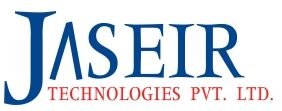Table of Contents
Introduction to LAMP Stack
A. Component Overview:
The LAMP stack, comprising Linux, Apache, MySQL, and PHP/Python/Perl, has been a stalwart in web development. This subsection provides an in-depth exploration of each component’s role within the stack.
B. Historical Context:
Understanding the historical context of the LAMP stack is essential. We trace its origins and evolution, shedding light on how it became a cornerstone of web development.
Advantages and Limitations
A. Advantages
- Open Source Philosophy: The open-source nature of the LAMP stack is a significant advantage. We explore how this philosophy contributes to the stack’s popularity and continuous development.
- Community Support: The LAMP stack benefits from a robust community. This subsection investigates how community support ensures ongoing development, security updates, and a plethora of resources for developers.
B. Limitations
- Scalability Challenges: While LAMP is a robust choice, it comes with scalability challenges. We dissect these challenges and provide strategies for mitigating them.
- Learning Curve: Some developers argue that the learning curve for LAMP might be steeper than for more modern stacks. This subsection explores this claim and provides insights for beginners.
Use Cases
A. Content-Heavy Websites:
LAMP’s efficiency in managing large volumes of data makes it ideal for content-heavy websites. Real-world examples showcase how businesses with substantial content requirements have thrived using the LAMP stack.
B. E-commerce Platforms:
E-commerce platforms demand reliability and stability. We explore how the LAMP stack’s characteristics make it a suitable choice for online retail, with case studies illustrating successful implementations.
Best Practices
A. Security:
Security is paramount in web development. This subsection outlines best practices for securing LAMP applications, covering topics like regular updates, firewalls, and secure coding practices.
B. Scalability:
Achieving scalability in a LAMP environment requires careful planning. We provide a detailed guide to optimizing database queries, implementing load balancing, and ensuring a scalable architecture
MEAN Stack
A. Component Overview:
The MEAN stack, comprised of MongoDB, Express.js, Angular, and Node.js, represents a full-stack JavaScript solution. This subsection delves into the role of each component and how they work together seamlessly.
B. Evolution and Flexibility:
Understanding the evolution of the MEAN stack and its inherent flexibility is crucial. We explore how it has become synonymous with efficient and dynamic web application development.
Pros and Cons
A. Pros
- Single Language Advantage: MEAN’s utilization of JavaScript across the entire stack is a significant advantage. We dissect how this consistency simplifies development efforts.
- JSON Everywhere: Storing data in JSON format throughout the stack streamlines data interchange. This subsection explores the implications of this approach.
B. Cons
- Complexity Challenges: The full JavaScript stack can be overwhelming, especially for beginners. We provide strategies for overcoming the complexities associated with MEAN development.
- Learning Curve: Understanding and mastering four technologies concurrently is challenging. This subsection offers guidance on overcoming the learning curve.
Use Cases
A. Real-Time Applications:
MEAN’s asynchronous nature makes it ideal for real-time applications. We showcase successful implementations in industries requiring real-time capabilities.
B. Prototyping and MVPs:
The simplicity of the MEAN stack accelerates prototyping and MVP development. Real-world examples highlight instances where businesses rapidly brought ideas to fruition.
Best Practices
A. Error Handling:
Effective error handling is crucial for robust applications. We delve into best practices



